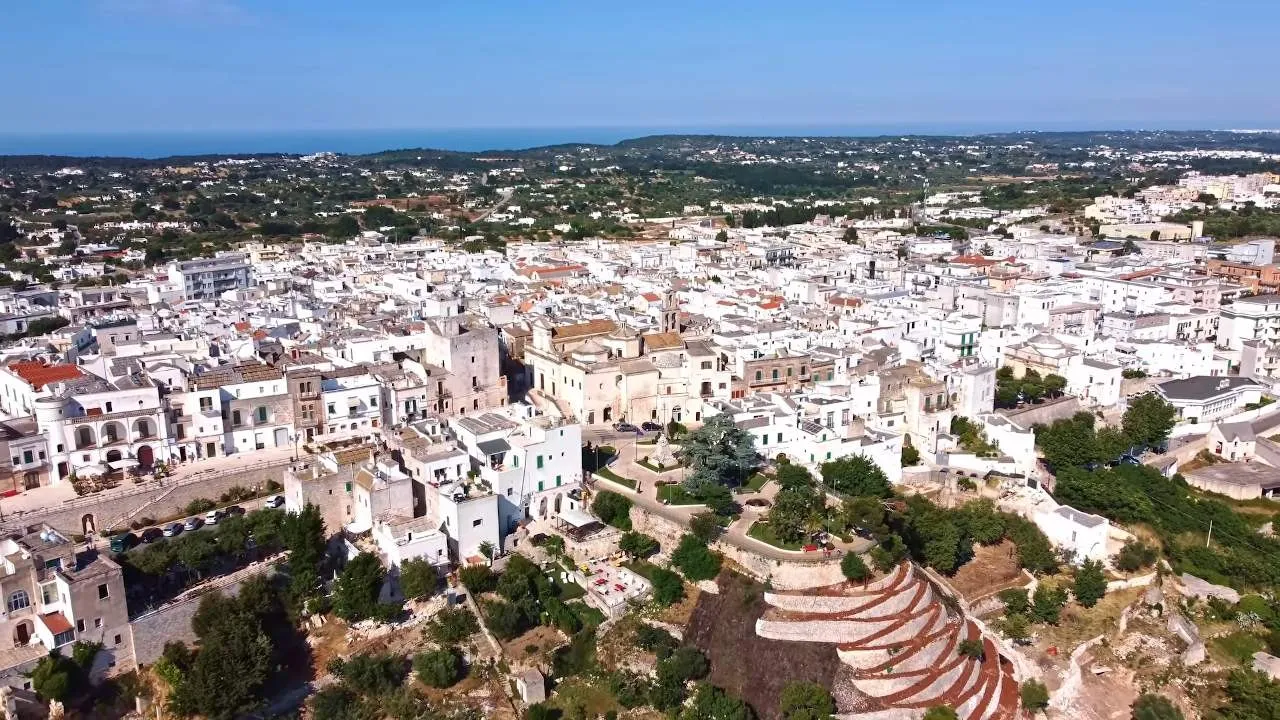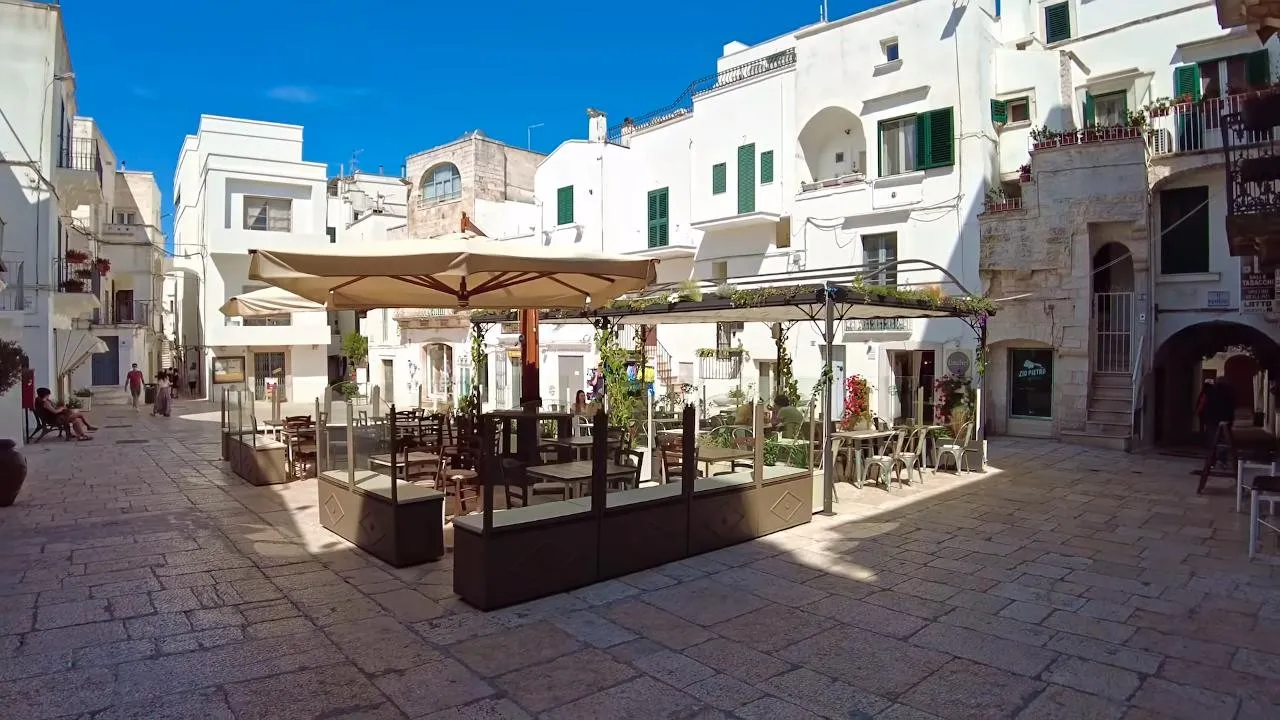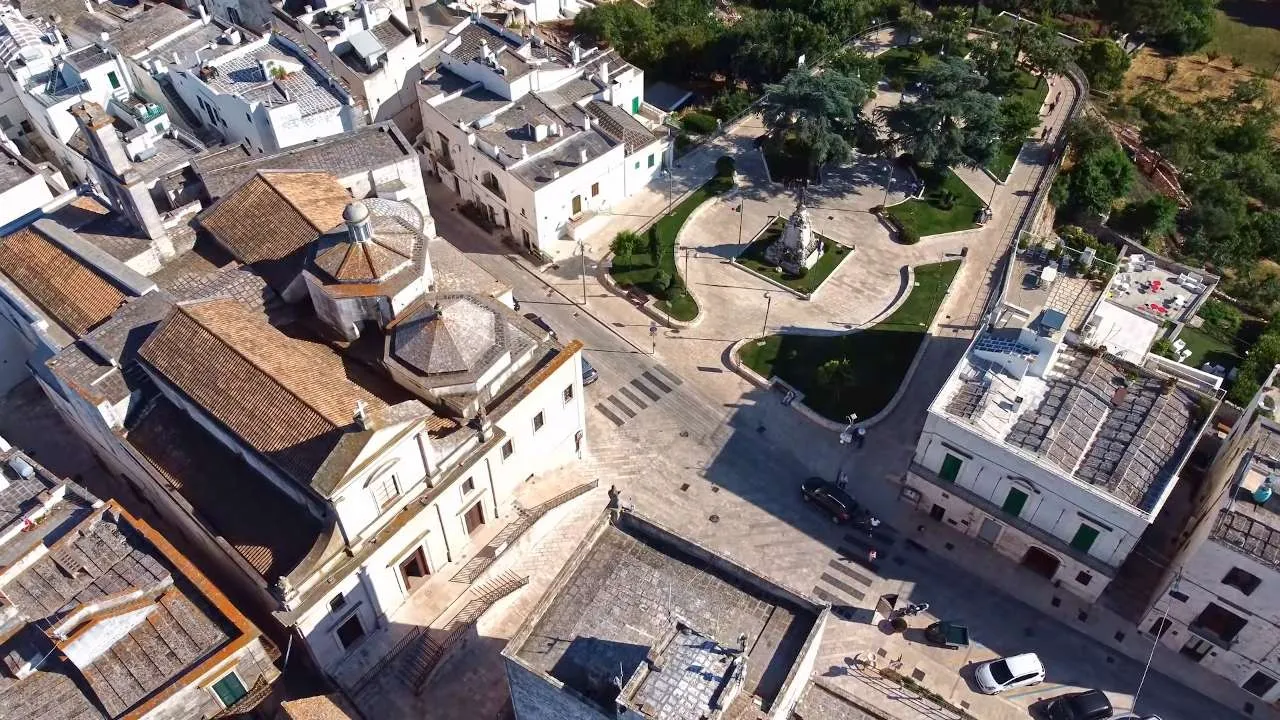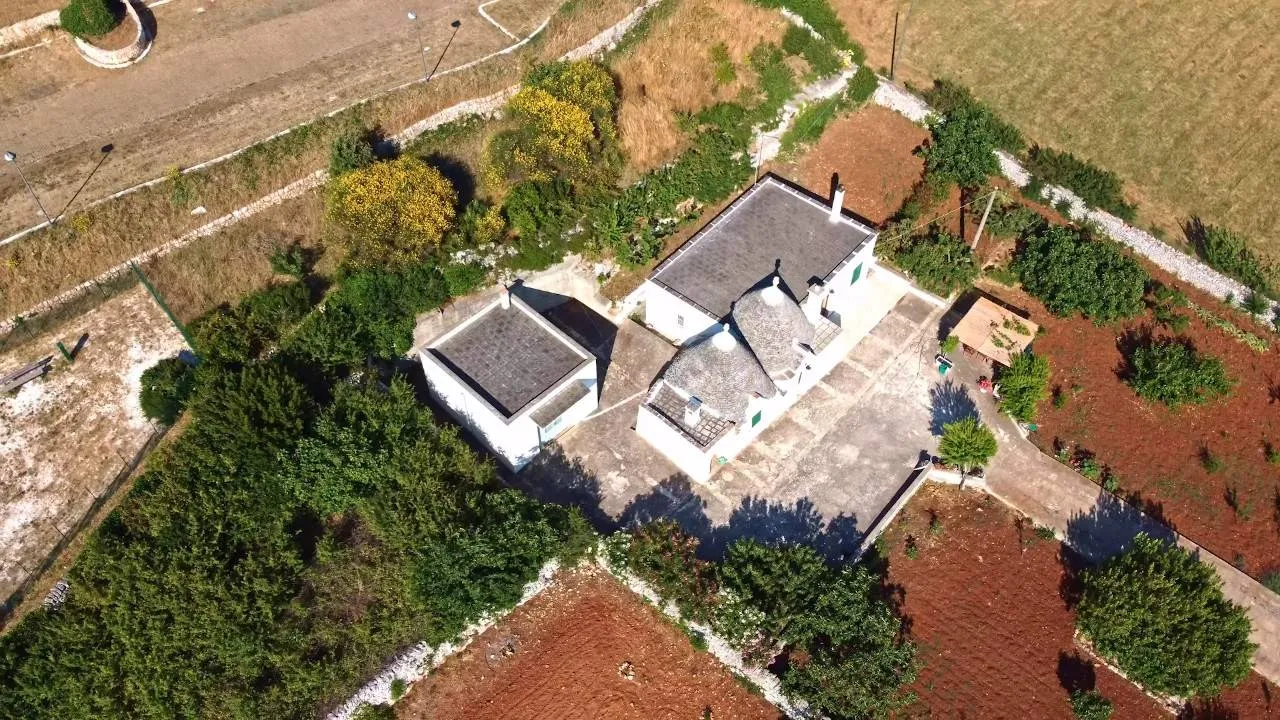Cisternino, what to do and see in Cisternino
Updated at: 25-03-2024

Tourists visiting the city of Cisternino will find themselves walking a labyrinth of alleys and streets, embraced by white stone houses, enriched by scenic and animated squares that overlook some of the most beautiful scenic views of Puglia.
Cisternino is a town of 11,205 inhabitants in the province of Brindisi, located in the hills in the southern part of the Murgia dei Trulli. The town is built with the typical white houses of the area and is immersed in the lush countryside of the Itria Valley, rich in centuries-old olive trees and historic Trulli, a setting makes it a magical place. Cisternino, together with Locorotondo and Alberobello, is defined as the Pearl of the Itria Valley thanks to the spectacular landscape, with its luxuriant nature, the Trulli and the spontaneous architecture of the farms and the historic center.
Thanks to the strong bond of the territory with history and traditions, the care of the landscape has always been a priority and this has transformed tourism into the most important asset of this country.
What to see in Cisternino
Among the most beautiful things to see in Cisternino are:
- Old Town
- Great Tower
- Mother Church of San Nicola
- Church of Santa Lucia (1500)
- Sanctuary of the Madonna d'Ibernia (Madonna de Bernis)
- Church of Santa Maria di Costantinopoli (1600)
- Church of San Cataldo (1600)
- Church of Christ
- Masserie
- Bosco Monti Comunali
- Trulli
Old Town

The historic center of Cisternino represents one of the best examples in Puglia of Spontaneous Architecture, being rich in solid structures built through the passage of knowledge without engineers or architects.
The main historic buildings are the Governor's Palace, the Bishop's Palace, the Amati Palace, the Lagravinese Palace, the Devitofranceschi Palace and the Capece Tower.
The historic center of Cisternino is small, does not have many monuments and can be easily visited in a day.
Entering the historic center of Cisternino you enter a labyrinth of white alleys and stairways.
Furthermore, when I visited it in August 2021, I found Cisternino particularly engaging thanks to the various installations that are part of the "The swinging village" project, which I will talk about later.
Great Tower
The Torre Grande, or Norman Swabian Tower, is a medieval structure that welcomes visitors to Cisternino at the main entrance to the center of Cisternino.
On top of the Norman Swabian Tower a statue of San Nicola di Bari was placed, to protect the territory.
Mother Church of San Nicola

The Mother Church of San Nicola was built in the 16th century on an early Christian church, and its reconstruction was the engine to restart an area abandoned for centuries following the destruction suffered by the Goths.
The church is full of works of the highest quality including sculptures, Madonnas, frescoes and an ancient organ.
Sanctuary of the Madonna d'Ibernia (Madonna de Bernis)
The Sanctuary of the Madonna d'Ibernia is located just outside the center of Cisternino, in the surrounding countryside.
The area around the sanctuary is rich in finds from the Byzantine, Roman and medieval periods.
The fact of being able to find many historical artifacts in the area still today suggests that the sanctuary was built on the ruins of an ancient early Christian church surrounded by a town.
Church of Santa Maria di Costantinopoli
The Church of Santa Maria di Costantinopoli, also known as the Church of Sant'Anna, is an 18th century structure.
The church is located outside the city, towards Martina Franca.
Church of San Cataldo
The Church of San Cataldo is an eighteenth-century structure located just outside the walls of the historic center, at the end of Corso Umberto.
Church of Christ
The Church of Christ is the most modern ecclesiastical structure in Cisternino, having been built in the 19th century.
Masserie

The territory of Cisternino is full of ancient Puglia Masserie that lie in the luxuriant surrounding area.
One of the best things to do, on holiday in Cisternino, is to rent a Masseria in the countryside around the town.
You will be able to appreciate the best of the Apulian countryside within traditional structures but equipped with all the comforts to be able to make you appreciate even more what the territory has to offer.
In any case, you can visit some of the traditional rural houses representative of the typical "Masserie da Campo" of Puglia, including Masseria Montanaro, Masseria Montereali, Masseria Costa, Villa Cenci and Masseria Devitofranceschi.
In many farms open to the public, in the countryside of Cisternino, eno-gastronomic services are also offered that welcome guests looking for refreshments in their bar, to be able to enjoy a meal with typical products in their restaurant or to enjoy the services of their farmhouse.
Bosco Monti Comunali
The Bosco Monti Comunali is a forest of over 400 hectares located on the hills that face each other rising from the sea to reach the municipality of Cisternino.
The Bosco Monti Comunali is one of the most important wooded formations in the province, both for its size and for the fact that it is composed of a vegetation of native plants of the area.
Trulli and landscape
One of the main attractions of Cisternino, as in the whole Murgia dei Trulli, are the unique cone-shaped figures of the traditional houses of the countryside in the area.
Along the way you can admire thousands of them with different arrangements, grouped or isolated.
Traditionally they were dry-built houses with local stone inhabited by local farmers.
Even today they are inhabited by citizens but some of them have been made available to travelers visiting Cisternino.
Things to do in Cisternino

Among the most beautiful things to do in Cisternino are:
- stroll through the wonderful village
- visit the surrounding countryside
- participate in events in the village
- visit the Trulli
- visit the churches
- visit the historic Masserie
- stop at the local farms
- learn about the wine culture of the area
- live the olive oil traditions of the area
Cisternino is, together with Alberobello and Locorotondo, one of the Pearls of the Itria Valley.
Visiting it you will find yourself catapulted into a hilly area typical of the Mediterranean area, but very tied to its traditions, its ancient culture and its ancient agricultural economy.
The local steakhouses and butchers, also open in the evening, will tempt you with the scents of the "Bombette" served on request, a typical meat dish of the city.
In its small Cisternino it is also appreciable for what it has to offer to visitors curious about ancient history and archeology.
The ancient history of Cisternino is testified by the continuous finds of finds from various historical periods throughout the surrounding countryside.
The origins of Cisternino date back to the Paleolithic, with finds in the area still today of prehistoric tools.
The area then developed during the Bronze Age, passing through the Roman period up to the looting and destruction suffered by the Goths.
Only after the repopulation started by monks in the Middle Ages, thanks to the discovery of an ancient early Christian temple in the area.
On the early Christian temple, the monks built the Romanesque church of San Nicola around the year 1000.
Since then the area of Casale di Cisternino became a bishopric that has continued to develop until today among the most beautiful landscape areas of the Itria Valley.
Cisternino Beaches
The closest beaches to Cisternino are about 10 km from the city center and can be easily reached by public transport and even more quickly with a rental vehicle.
Being able to return to the hills in the evening after a hot day at the beach allows you to enjoy the summer evening cool of the countryside, making you find yourself in a paradise compared to the hot and sultry air on the coast.
From the center of Cisternino the closest beaches are Torre Canne to the north and the beaches of the Dune Costiere Regional Natural Park, which starts from Torre Canne and reaches Torre San Leonardo.
Even further south begins the Costa Merlata with a series of beaches that alternate with coastal stretches of rock, as on the beaches of the Torre Pozzella Natural Oasis, embraced by the typical Mediterranean scrub.
Visit the Itria Valley

Cisternino, together with Alberobello and Locorotondo, offers the same experiences and sensations that are felt throughout the Itria Valley.
Valle d'Itria is a luxuriant area, rich in woods, wild landscapes and hilly Mediterranean nature.
The territory of the Itria Valley is characterized by the presence of wonderful villages with typical white stone houses and by the unique in the world of Trulli.
A few kilometers from Cisternino you will find Locorotondo and Alberobello, which you can reach in a few minutes by car.